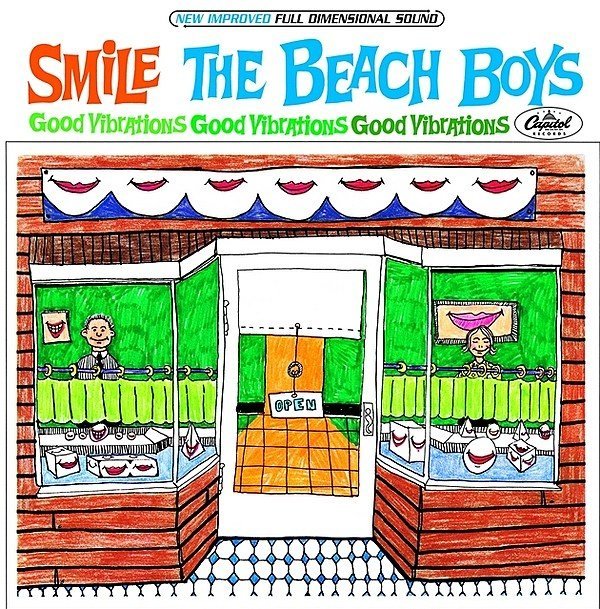The Ultimate Guide to the Melodica in 2023
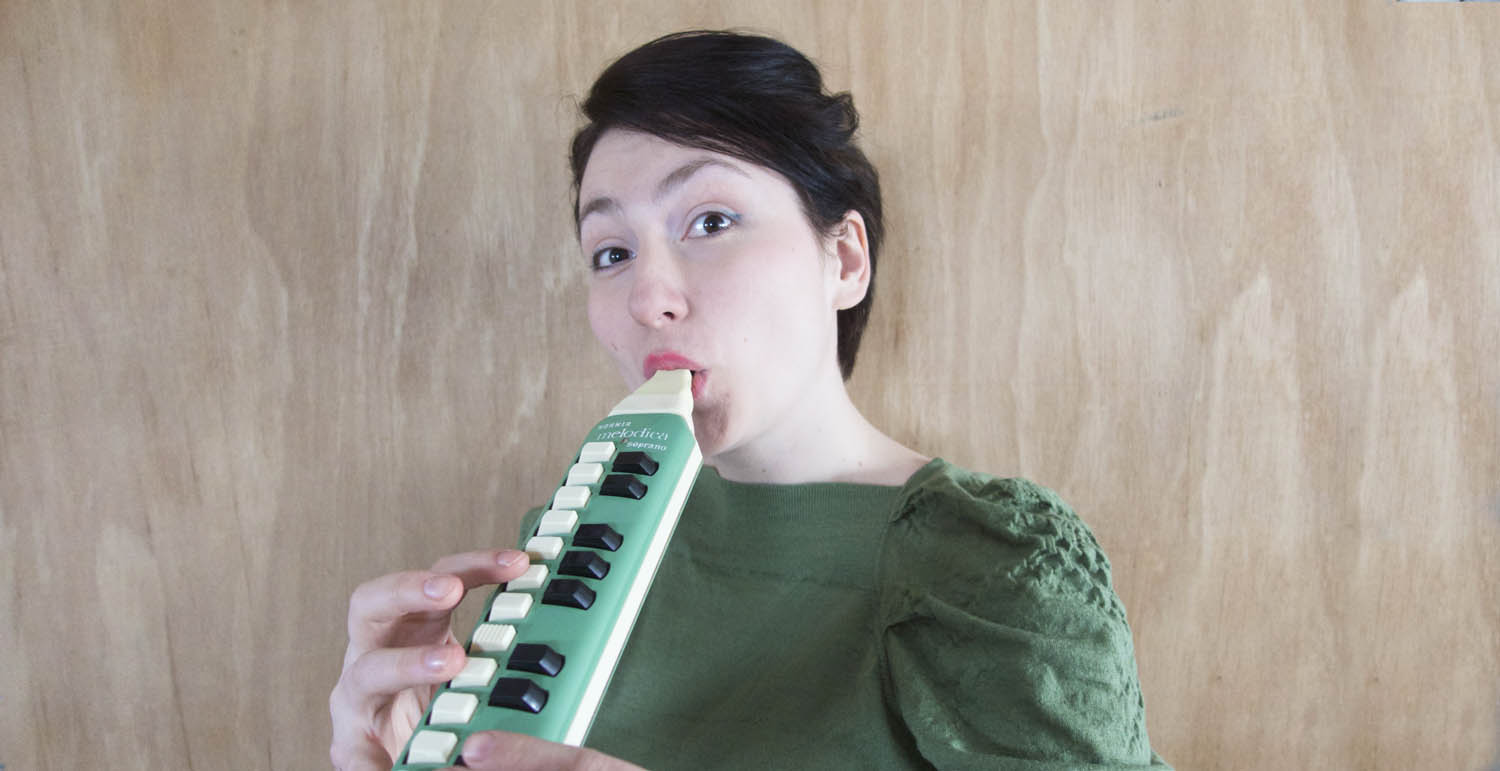
What’s a melodica?
The melodica is a fun, handheld piano-style keyboard which you blow through to make a sound. It sounds like a cross between a harmonica (mouth organ) and a piano accordion. They’ve been around for about 50 years, first making a splash within schools as a learning instrument. They’ve since been adopted by reggae artists, pop and jazz musicians, and even classical composers.
How many keys does a melodica have?
Melodicas typically come in two keyboard sizes:
32 keys: Starting at F3 (just below middle C on a piano), and ending on C6

37 keys: Starting at F3 (just below middle C) and ending at F6

There’s also many other sizes, ranging from 26 keys (or smaller!) to 44 keys.
Having less keys limits the amount of songs you can play on your melodica.
The more keys, the less likely you are to run out of notes!
Check out my personal
melodica recommendations
at the end of the article !
What are the different melodica models?
The vast majority of melodicas are alto melodicas.
But you do occasionally see a soprano melodica, which sounds one octave (8 notes) higher than an alto melodica.
The very first Hohner melodica, was a soprano model.

There’s only one melodica that can be classed as a tenor melodica.
That’s the Hammond 44.
It has 44 keys, ranging from the C3 (an octave below middle C) up to G6
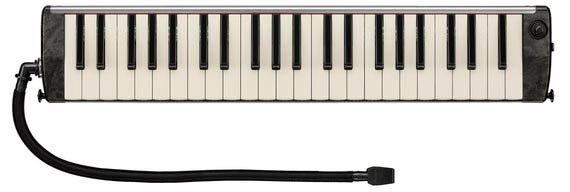
There’s also 2 bass melodicas, both made by Suzuki.
One is the Suzuki B24 Bass Melodion, and the other is the Hammond Melodion Pro 24B (with internal mics).
Both of these keyboards are just under two octaves, ranging from the F2 to E4.
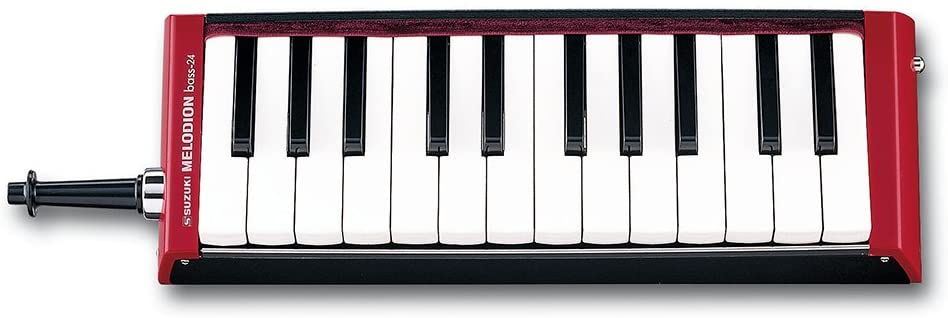
One quirk of these bass melodicas is that the notes can take a while to sound after you’ve started playing.
This is known as a ‘slow attack’.
They also take more air to play than the altos, because the reeds are bigger.
When was the melodica invented?
The word ‘melodica’ was invented in 1958 by the Hohner Melodica Company in Germany.
Their first model was the iconic green Hohner Melodica Soprano, which had buttons rather than keys.
The word ‘melodica’ is a trademark belonging to Hohner, so technically they are the only company allowed to call their instruments melodicas.
Their second issue, also in 1958, was the red Hohner melodica alto

But in the same year, we also saw the invention of the Clavietta in Italy
The Clavietta was much more like the melodicas we know today, with a piano style keyboard. It used high quality stainless steel reeds, and produced a beautiful sound.
It was designed by Andre Borel, and used by Nat King Cole and other high profile musicians of the era.
It’s made largely of metal, and can occasionally be found on Ebay.

The history of the melodica goes way back further than the 1958
The earliest melodica-style instrument in existence today is the Harmoniphon.
Currently housed at the Met Museum in New York, it’s “a free reed instrument patented in 1836 by Paris, Lecrosnier and Tremblai …A player would blow into a tube that provided air to sound the reeds, while using the keyboard to direct the actual pitches.”

What is the button at the bottom of the melodica for?

When you play the melodica, condensation from your breath collects on the metal reeds inside.
You might have encountered a wet melodica after an hour or so of playing – the notes stop working or start making strange sounds.
The ‘moisture release button’ at the end of the keyboard allows you to release that moisture.
Just blow through the mouthpiece while pressing the button.
How do you look after a melodica?
After each playing session, use the moisture release button to blow out any condensation
Leave the melodica upside down overnight, so the moisture can drain out.
When not playing, store the melodica it in its case or in an area protected from dust.
Avoid eating directly before playing, to avoid small food particles becoming lodged in the reeds, and avoid sugary drinks while playing.
How do you clean a melodica?
Cleaning a melodica can help it play more smoothly, eliminate bacteria, and remove any unpleasant odours
For plastic melodicas, follow these steps:
- Fill a plastic tub, or sink with warm water
- Add a cup of vinegar
- Submerge the whole instrument in the bowl of water
- Press the keys and moisture button to remove any internal air
- Leave the melodica submerged for one hour
- Take the melodica out and blow while pressing the moisture button. The notes should begin to sound
- Leave the melodica standing on its end overnight in a warm place
For vintage or wooden melodicas:
- Mix approximately half a litre of water with 50ml of vinegar
- Remove the mouthpiece or tube of the melodica
- Carefully pour a small amount of the vinegar solution through the mouthpiece opening
- Cover the opening with your thumb, and shake the melodica gently
- Pour the solution out through the mouthpiece opening, and dispose of it
- Repeat this three times
- Blow into the melodica while pressing the moisture button. The notes should begin to sound
- Leave the melodica standing on its end overnight in a warm place
But is the melodica a real instrument?
Although the melodica can look like a toy, it’s increasingly being used as a serious instrument.
When skilfully played, it can compete with any of the more established and traditional instruments.
Professional musicians and composers have started taking the melodica seriously, developing techniques such as circular breathing and 2 handed playing while standing.
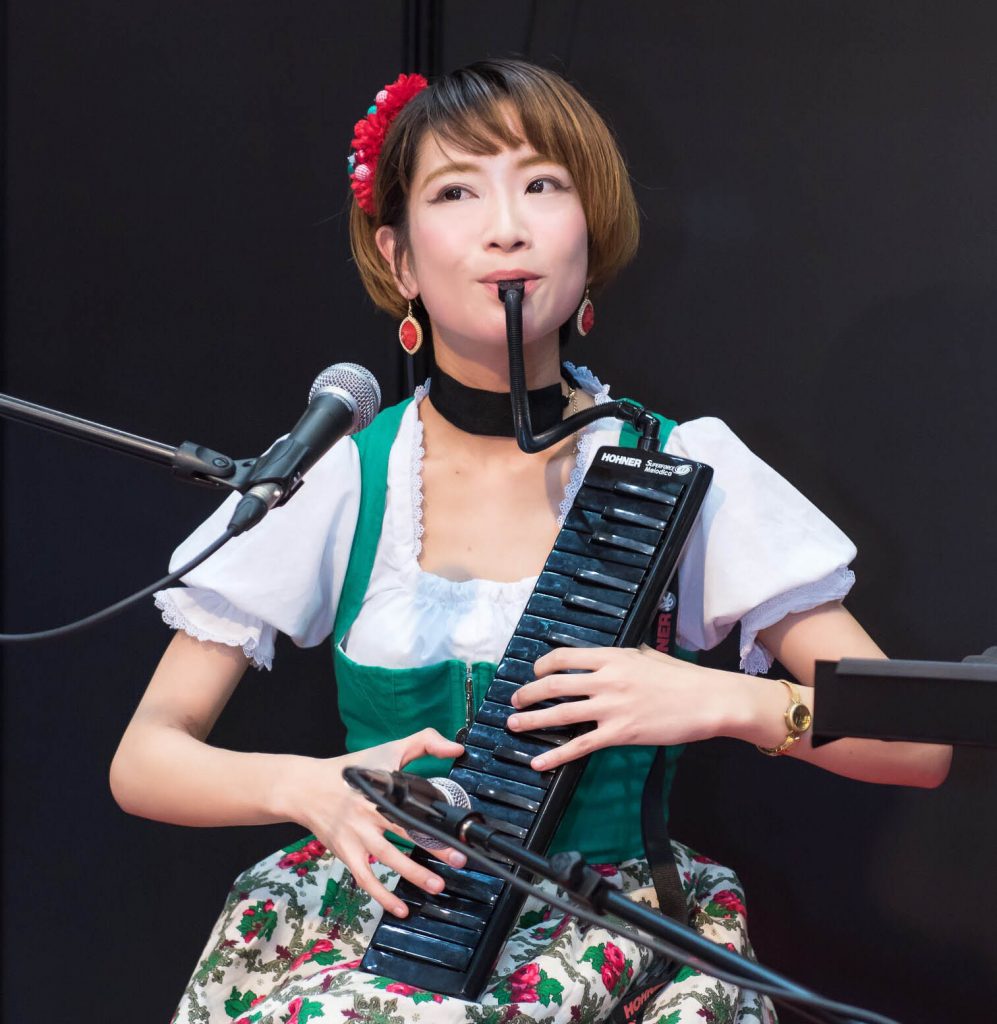
How does a melodica work?
When the melodica player blows, the air travels through the mouthpiece and into a reed chamber. It continues to pass through a reed.
But what are reeds?
Reeds have two sections:
1) A frame, which is like a tiny metal window frame
2) A tongue, which is a tiny slither of metal attached to the inside of the frame
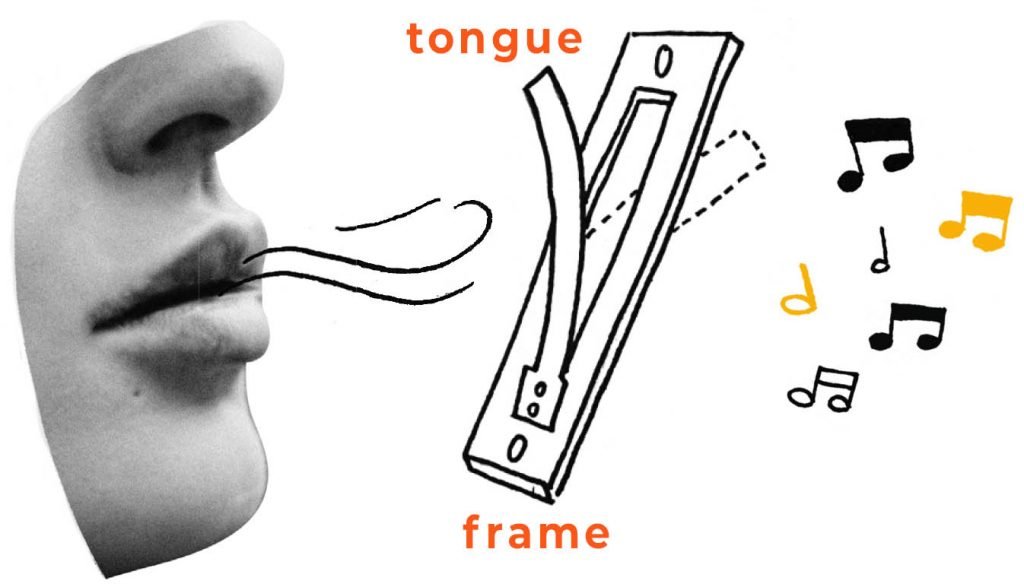
As air passes through the reed frame, it causes the tongue to vibrate.
The vibrating changes the shape of the air flow, into something called a sound wave.
This is the sound we hear.
There’s one separate reed for every note on a melodica. Each one is a different size – the smaller the reed, the higher the note.
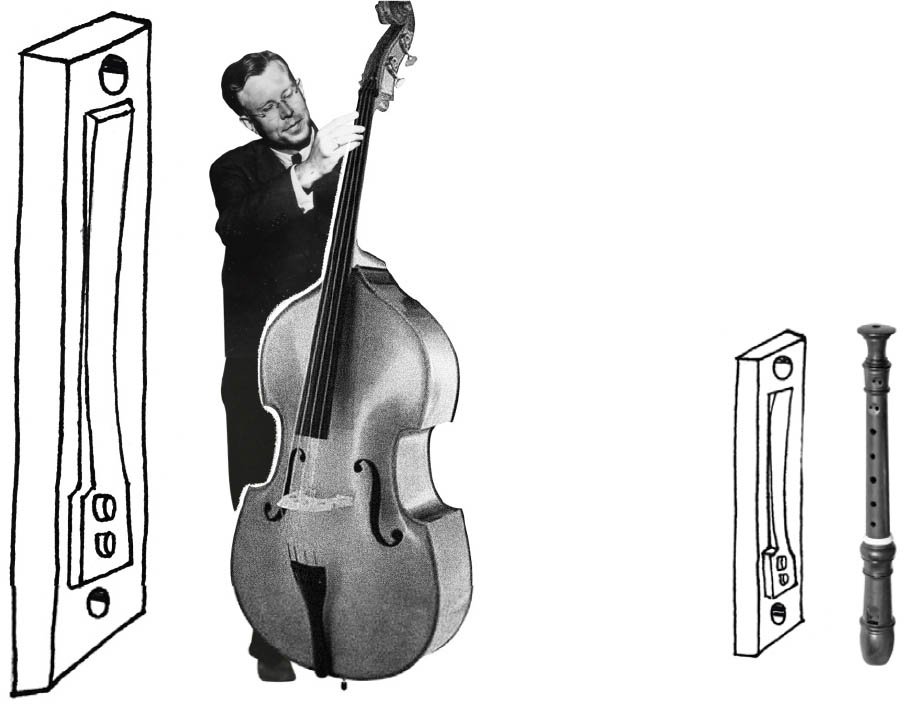
Other instruments which use reeds, and have a similar sound to the melodica:
- Harmonica, which is like a melodica without the keys
- Accordion, which uses bellows instead of lungs to provide air
- Pump organ, which has a full size piano keyboard and bellows
- Concertina, which uses buttons and a tiny bellows
Can you play chords on a melodica?
Yes, just like a piano, you can play chords on a melodica.
The melodica is polyphonic, meaning you can play two or more notes at the same time.
The more notes you, play, the more air you will need. Chords of more than three notes can be hard work.
Tip: On a melodica, the lowest notes in a chord are the loudest.
Try playing the melody notes at the bottom of the chord instead of the top.
Who plays melodica?
The first player to really popularise the melodica in the 1970s was Augustus Pablo.
He was a Jamaican dub artist, who become obsessed with the melodica at a young age, and used it in most of his recordings.

Currently, Jon Batiste, a Jazz musician from new Orleans, plays a Suzuki Pro 37 v2, which sounds great in jazz and folk music.
There are also several pop bands who use the melodica in their songs.
Many producers and composers have used the melodica to map out melodies or harmonies in hotel rooms, or on the tour bus. Here’s John Lennon playing Strawberry Fields Forever on a Hohner melodica years before it was recorded.
What are other names for the melodica?
The melodica is also known as the:
- melodyhorn
- pianica
- blow organ
- key flute
- vibrandoneon
- clavietta
- melodeon
- diamonica
- wind piano
- keyboard harmonica
How do you tune a melodica?
Like all musical instruments, melodicas eventually start going out of tune. These could take many years if you’re an occasional player, or sooner if you’re playing every day.
Melodica players have worked out a simple way to tune up their instruments, and make sure they sound good while playing with other instruments.
Although it’s not hard, it takes a bit of practice.
You have to remove the outer cover and the inner chamber with a screwdriver. Then you delicately scrape each individual reed to change the pitch.
I’ve made a full tuning guide here – How to Tune A Melodica
How are melodicas made?
Mass produced modern melodicas are made mainly of plastic.
There’s several moving parts, each of which are formed using a process called injection molding.
This is where plastic is heated until it is liquid, and then mechanically injected into a metal mold.
Once the plastic has cooled, the mold is removed, to reveal a highly detailed solid plastic part.
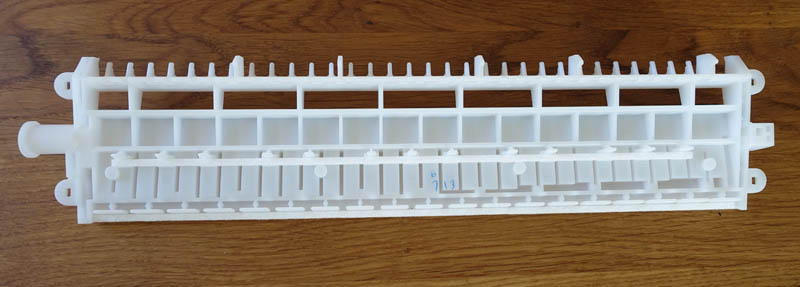
The reeds are always made of metal, and create the sound as air passes through them.
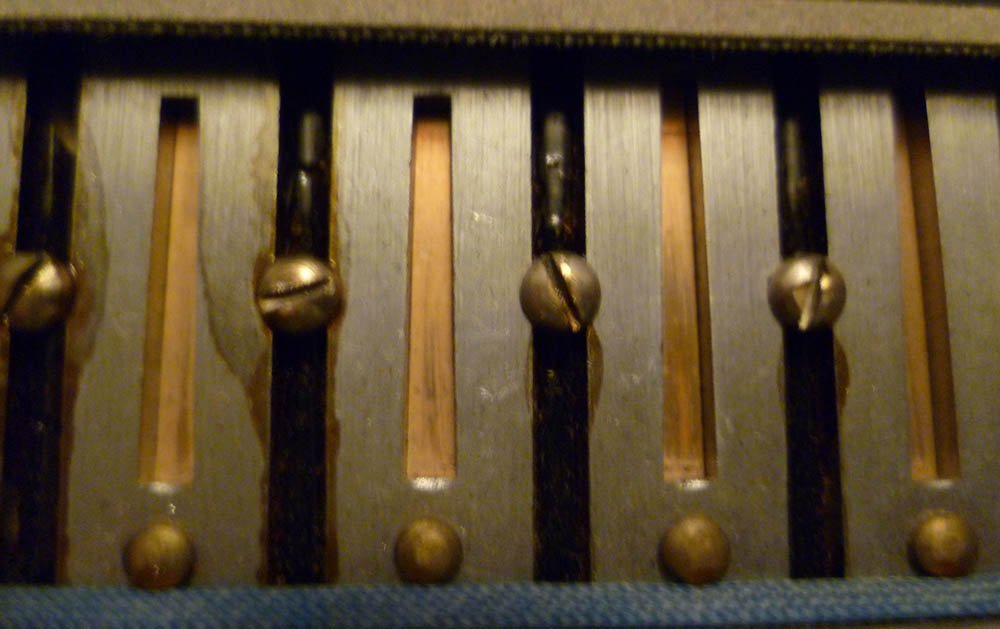
High end, bespoke melodicas can be made of wood and involve considerable craftsmanship.
Daren Banarsë (the author) uses a combination of wood, metal and 3D printing to create high quality melodicas.

Wooden Melodicas
Some professional melodica players prefer to play melodicas that are made primarily from wood.
The instrument looks more professional, and generates a warmer sound.
Suzuki is the only company currently offering a mass produced wooden melodica.
It’s called the Suzuki W-37.
The wooden parts are made of mahogany and beech, but the internal parts are plastic.

The Vibrandoneon is a fully wooden melodica, and was marketed by Victoria Accordions.
It’s a high quality instrument following the design of the piano accordion rather than the more recent melodicas.
Although it looks and sounds beautiful, it’s known to suffer from condensation issues.
See the Vibrandoneon in action on YouTube
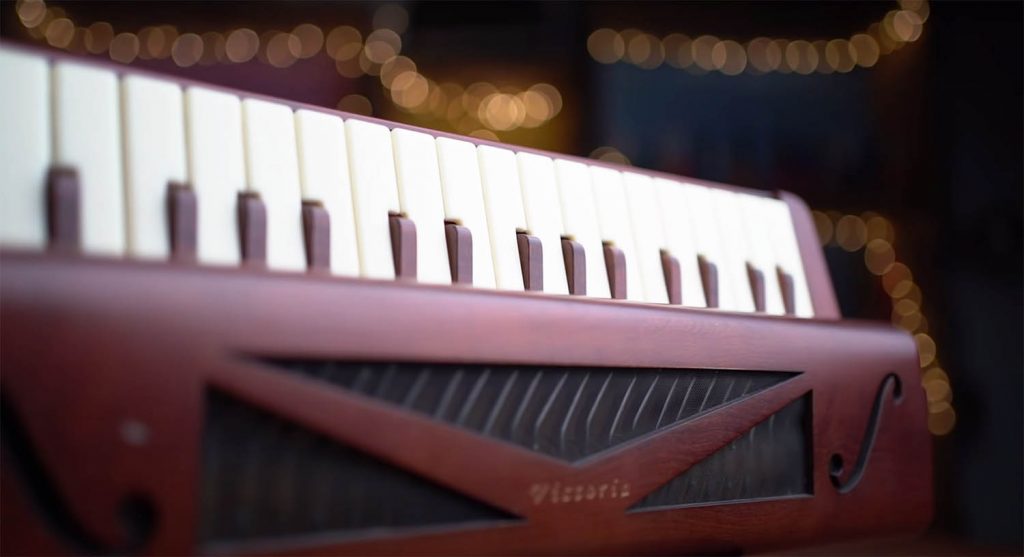
Melodica microphones
There are two ways to use a microphone with a melodica.
The first is to use a tiny microphone which attaches to the inside of the melodica.
They’re called pickup or contact mics.
These microphones are perfect for playing on stage, as they’re small, and attached to the instrument. They enable the player to freely move around, without picking up the sound of other loud instruments.
A drawback of using these mics is that they sometimes pick up the sound of the keys moving.
Take a look at the Myers 3” micro goose neck.

The Hammond 44 is the only melodica with built in pick up mics.
You simply plug one end of a cable into the melodica, and the other into an amplifier or mixer.

The other way to use a microphone, is setting it up about 12 inches or 30cm from the melodica.
This is great for studio recording, or in an environment where there’s no noisy instruments nearby.
Because the microphone is set back from the instrument, it captures a fuller, more natural sound, and there’s no sound of the keys clanking.
Because melodicas are quite high pitched, they work well with dynamic microphones, which tend to round off the higher frequencies.
Good results have been achieved with the microphones on Zoom recorders, and also with the Shure SM57.
For the very best quality sound, use a large diaphragm condenser mic, such as the AKG C414.

How do I dry out my melodica?
After extended playing or practice sessions, its normal for your melodica to accumulate condensation on the reeds, inside the instrument. Once the reeds are saturated, using the moisture release button won’t have any effect.
You can leave the melodica to dry out overnight, or if you need it dried quickly, you can use a small electric pump like this, which will suck out all the moisture in minutes.
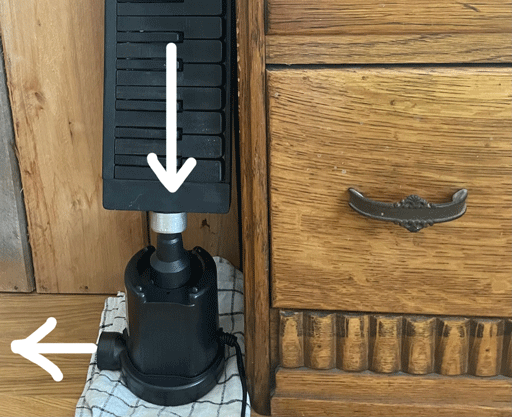
Melodicas that I recommend
I’ve made a list of quality instruments, suitable for playing in a band and for recording. I’ve played them all with good results.
Let’s begin with the smallest melodicas, perfect for that trip away, and progress to the largest sizes.
.
1) Yamaha P25F
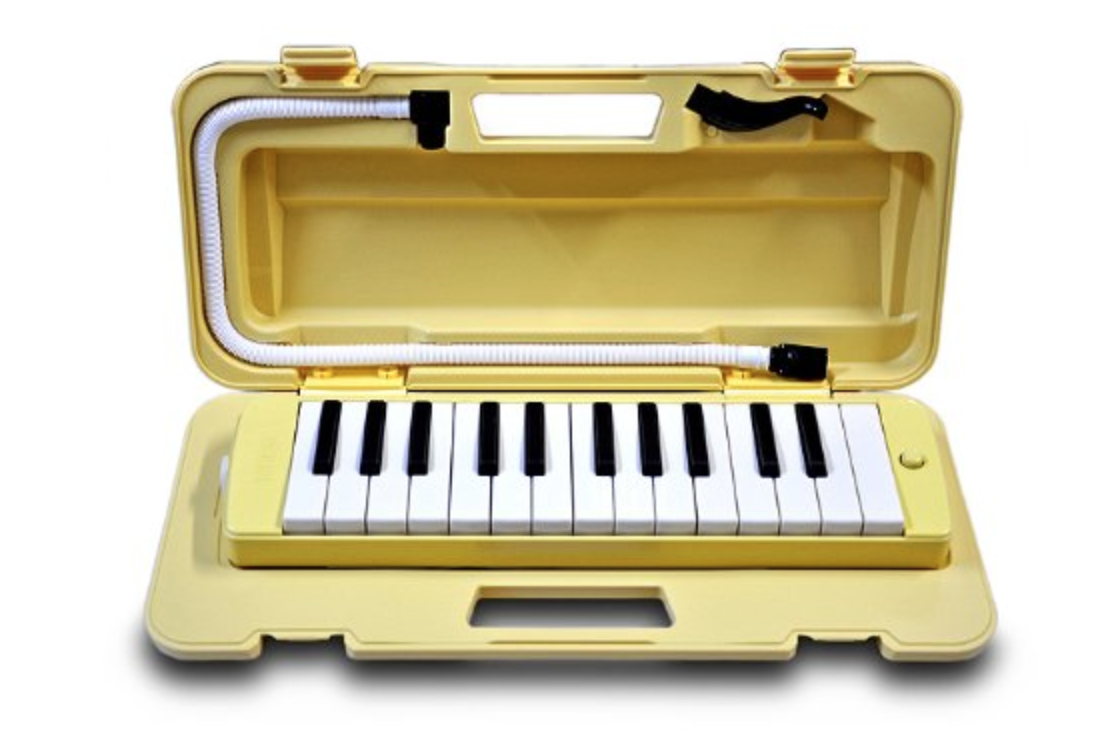
The smallest pro level melodica has a dinky 2 octave keyboard.
This is as cute as pro level melodicas get.
It’s perfect for taking on a trip, and fits nicely into the hand.
This little brother of the Yamaha range shares all the positive characteristics of its elder siblings. It’s well made and has a warm, lively tone.
If only all tunes fitted into 2 octaves…
2) Yamaha P32D
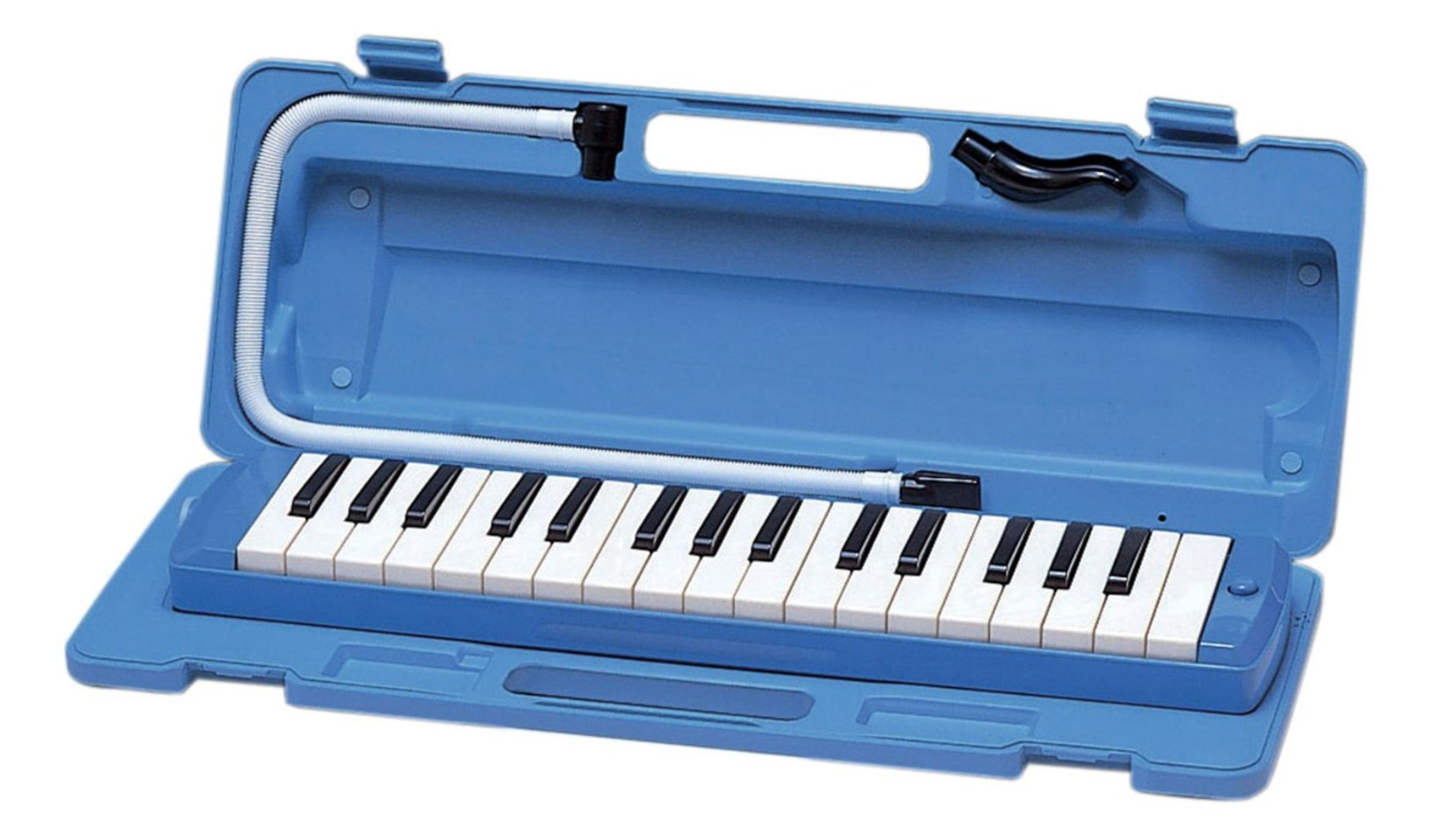
This is the next step up in the world of Yamaha ‘Pianicas’, and has a 2 ½ octave keyboard.
I’ve always loved Yamaha melodicas, because they’re good quality instruments at a fair price. The tone is solid, and the reeds hold their tuning well.
This is an instrument I take with me when travelling, and I used it to write all of the tunes in my Melodica Lessons book.
I also recorded all 10 YouTube lessons with a P32D.
3) Suzuki M32C
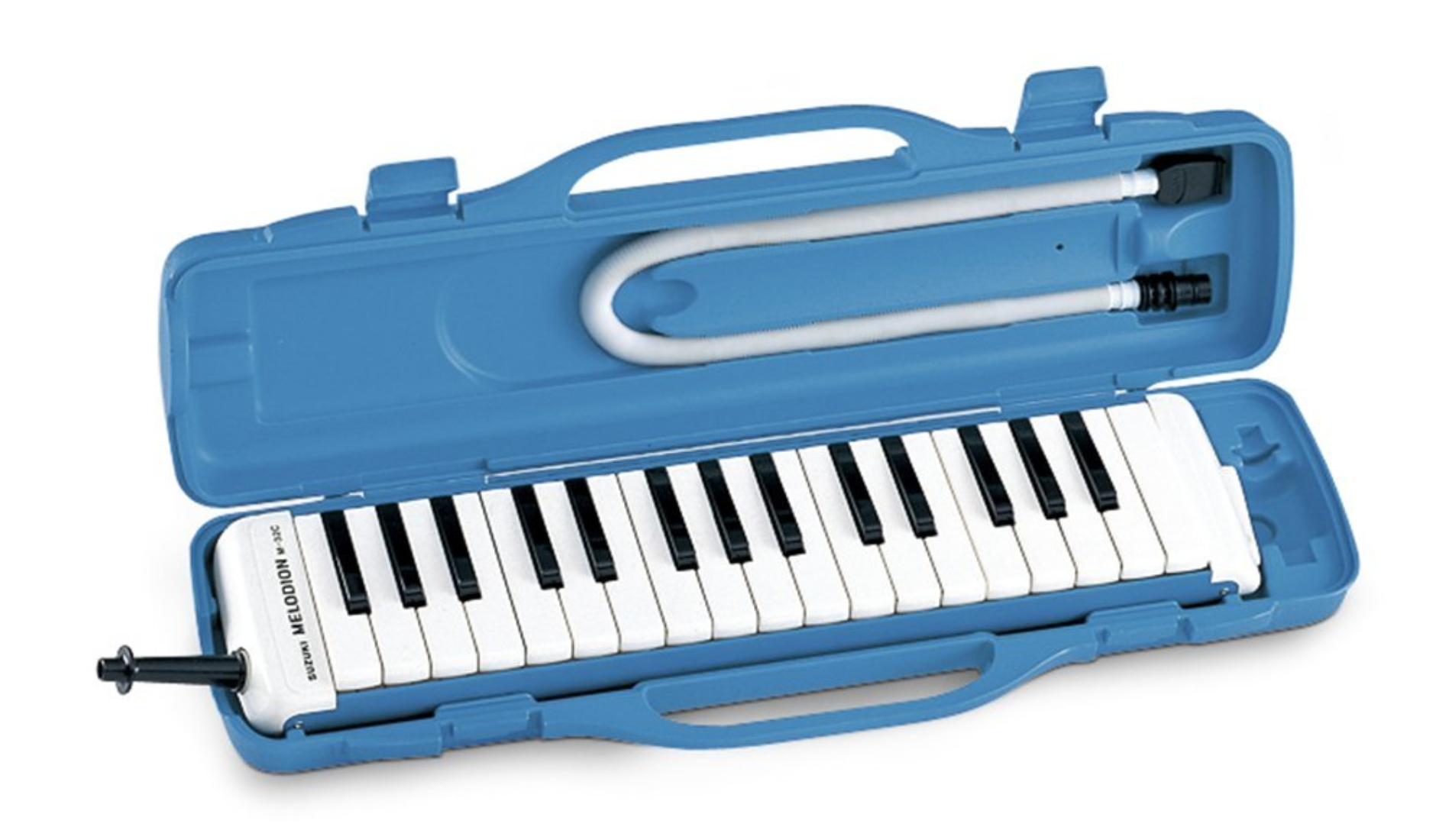
Suzuki also make good quality melodicas, or ‘melodeons’ as they call them.
They’re definitely up there with Yamahas in terms of reed quality.
This 32 key model has a warm tone, some say leaning towards the sound of a harmonica.
An advantage over the Yamaha P32D is the condensation-release valve, and it’s good looks!
.
4) Suzuki M37C
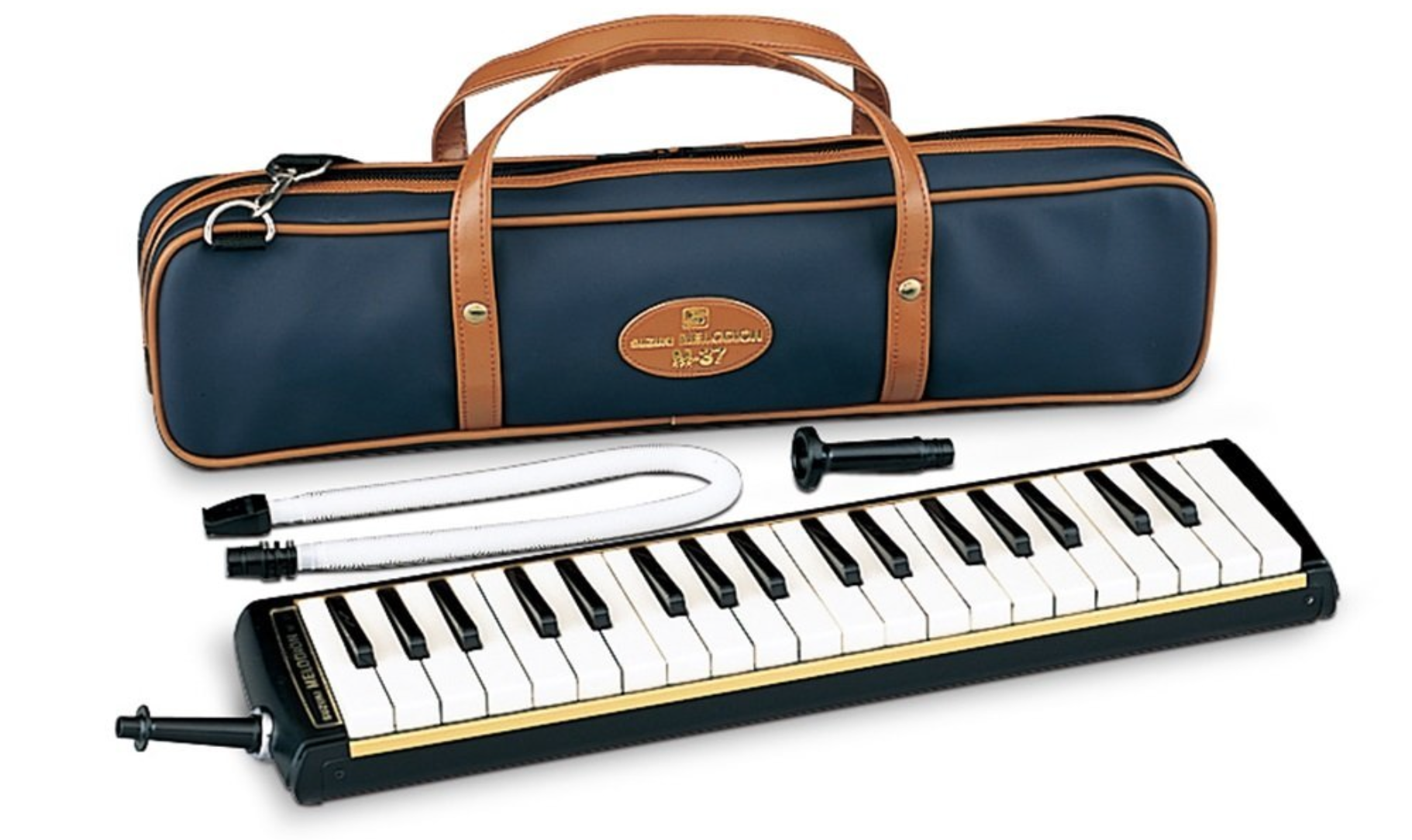
This is Suzuki’s full size, 32 key melodica.
It was my go-to melodica for many years. It rivals the Yamaha P37D
The M37C has a strong metal panel at the back, and a set of great sounding reeds. The sound is warm, loud and resonant.
5) Suzuki Pro 37
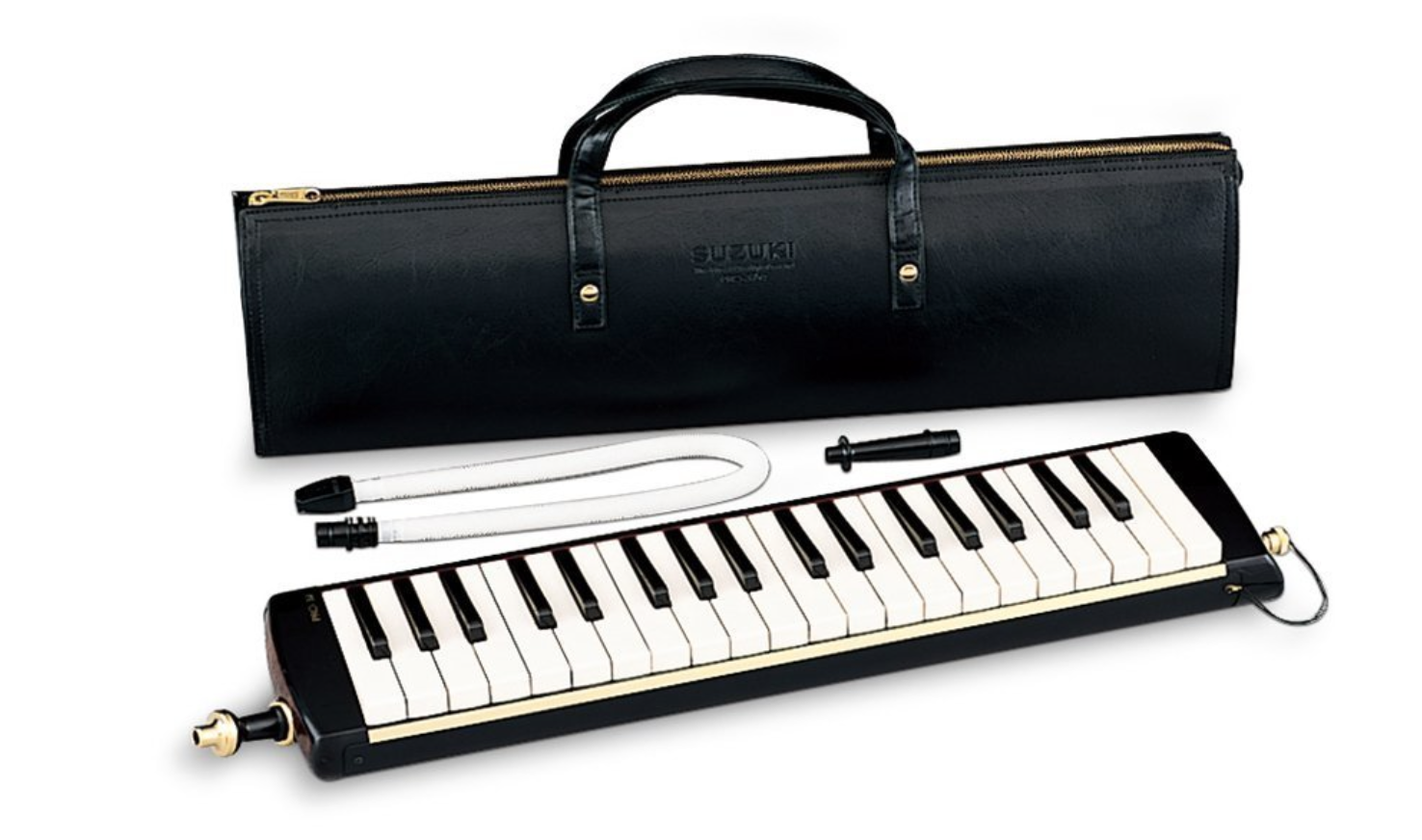
This is Suzuki’s flagship pro level melodica.
Go for this if you want the best that Suzuki has to offer.
Personally, I find it very similar to the M37C to play, so I think you’re really paying for its looks.
6) Yamaha P37D
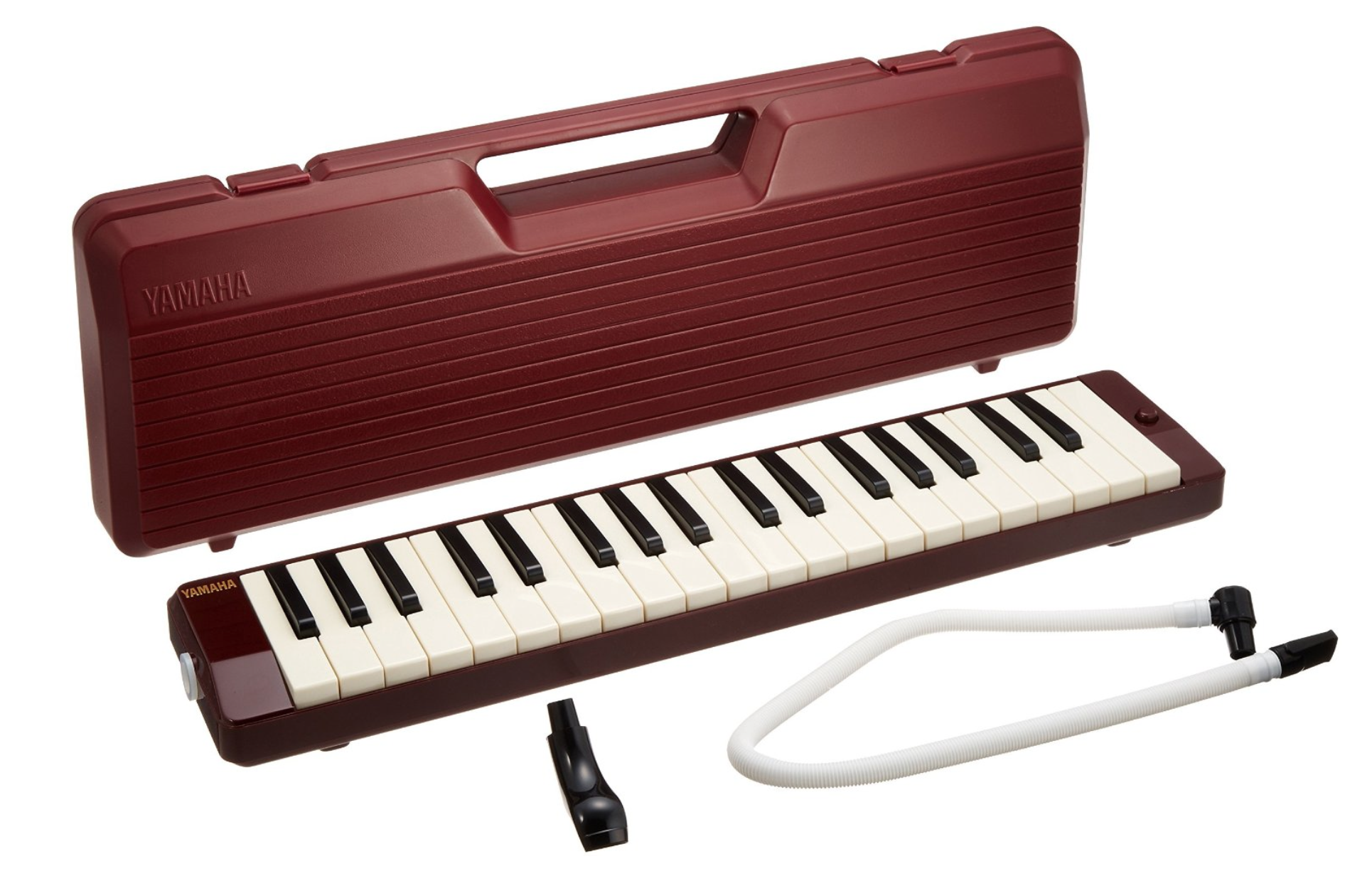
This is one of my favourite melodicas!
It’s one of the most popular full size melodicas on Melodica World.
The P37D combines volume, warmth and a good response.
I think the deep burgundy colour makes it slightly more grown up looking than some of its contemporaries. It’s also great value.
I made a YouTube review of this melodica
.
7) Hohner Airboard 37
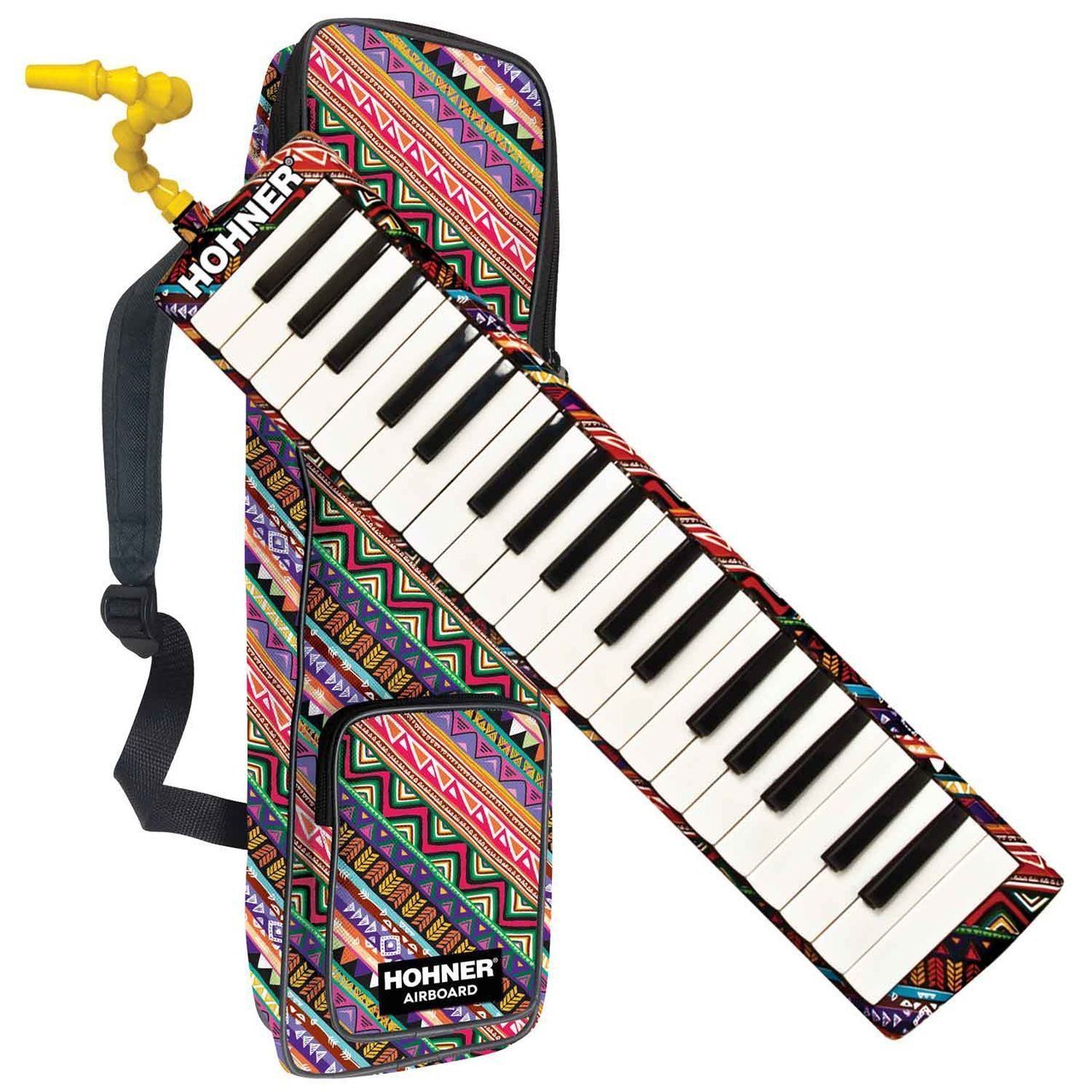
Hohner must be the most well known melodica makers, and are famous for coining the word ‘melodica’!
I discovered this melodica while recording the ‘16 Hohner Melodicas’ Youtube video.
It was a pleasure to play, and I think it really stands out on the design front, and has a funky matching case to go with it.
There’s also a reggae version, if that’s your thing…
The Hohner Airboard 37 on Amazon
8) Hammond 44
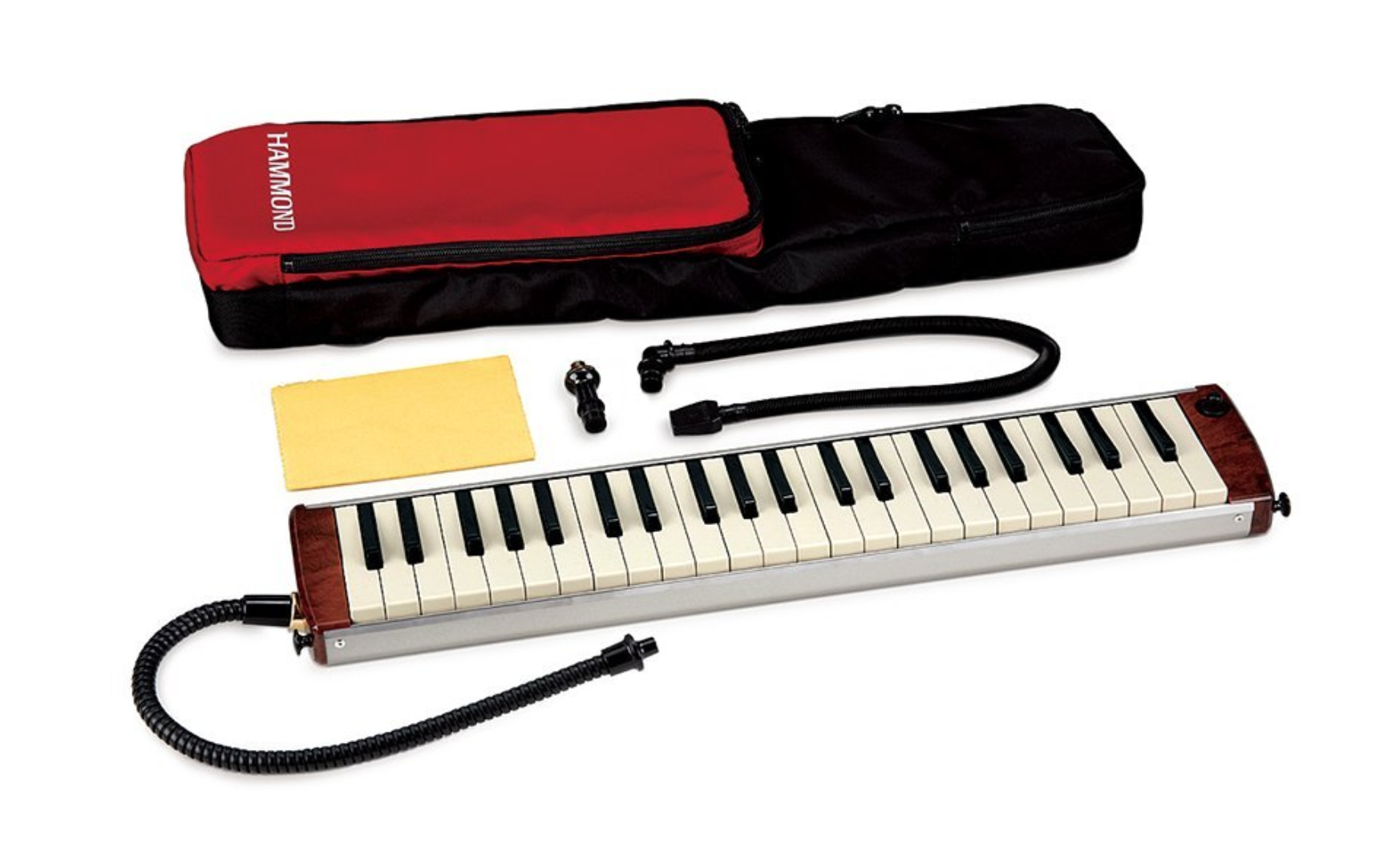
Hammond have really aimed for the stars with this 3½ octave, 44 key melodica.
I bought one of these as soon as it was released, excited by the extra notes.
At level 3, it’s a cut above most melodicas, with a smooth action, and even tone.
It’s ideal for playing classical music, because of the extended range and pure tone.
The reeds are top quality.
It also has the added advantage of 2 built in pickup microphones, so you can plug it directly in to an amp, or into a mixing desk for recording.
.
9) Hammond 44HP
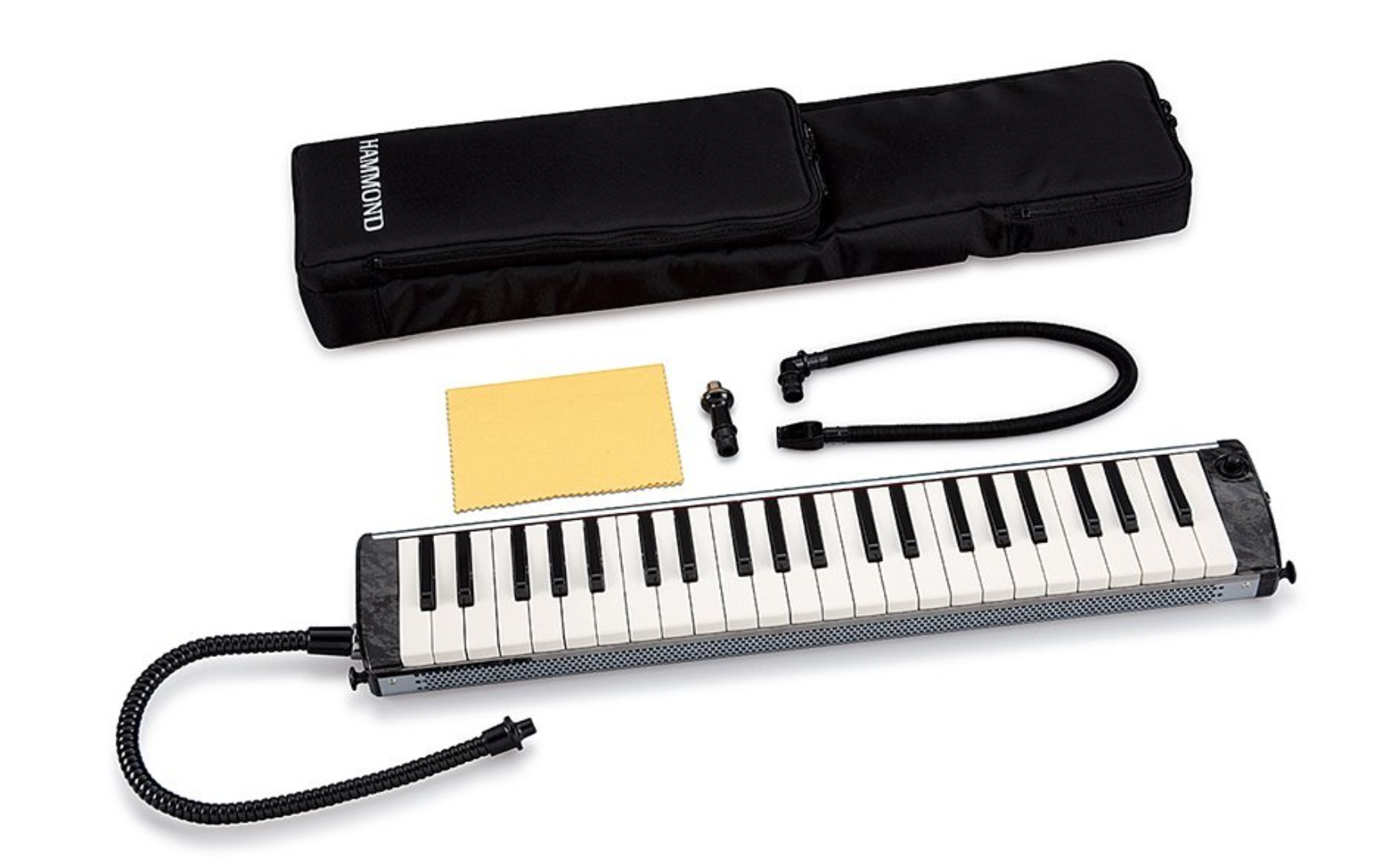
This nearly identical to the model above, but has a brighter, louder tone.
I found when comparing the two, that the tone of the 44HP was cleaner, almost digital sounding in comparison.
The metal back plate is perforated, letting out more sound for a louder volume.
The Hammond Pro 44HP on Amazon
.
10) Hammond Bass Melodion
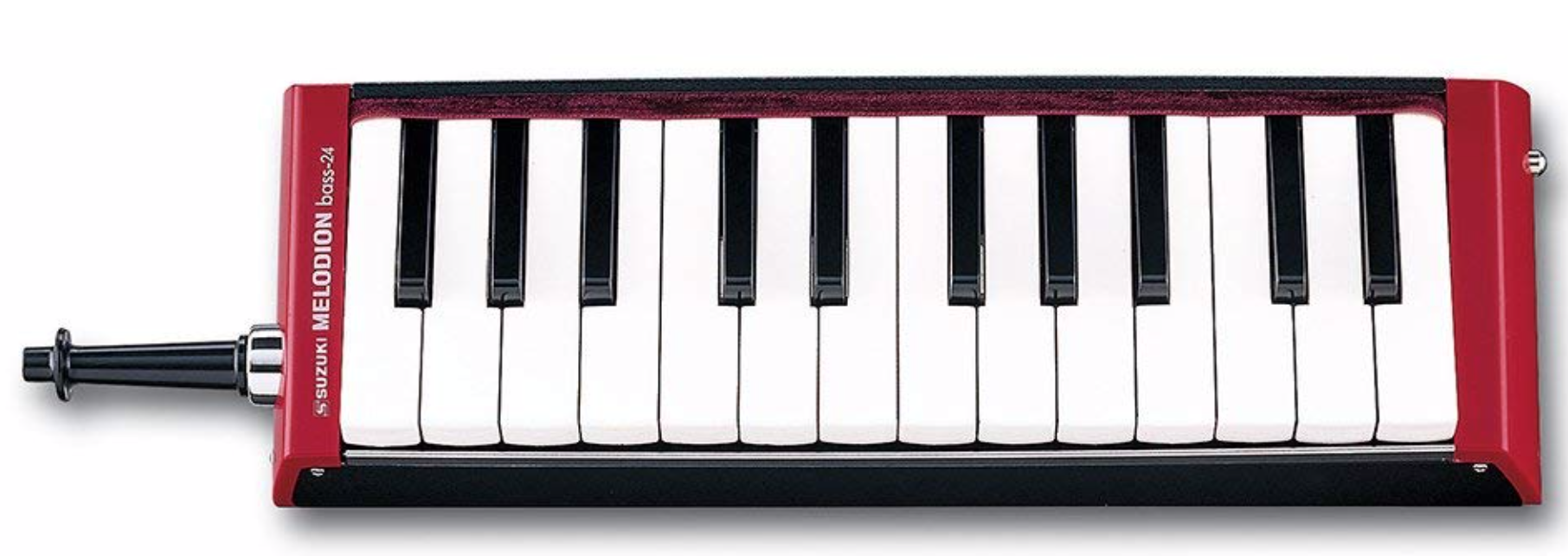
This is a melodica you don’t see much of. It’s a 2 octave bass melodica, and goes a fifth lower than the Hammond 44.
It’s great for playing bass lines in a band, or for the bass player in a melodica ensemble.
The only downside to this instrument is that the lowest notes take slightly longer to sound, also know as having a ‘slow attack’
The Hammond bass melodica on Amazon
.
And just when you thought it was all over…
BONUS EXTRA! Andes A25F Andes
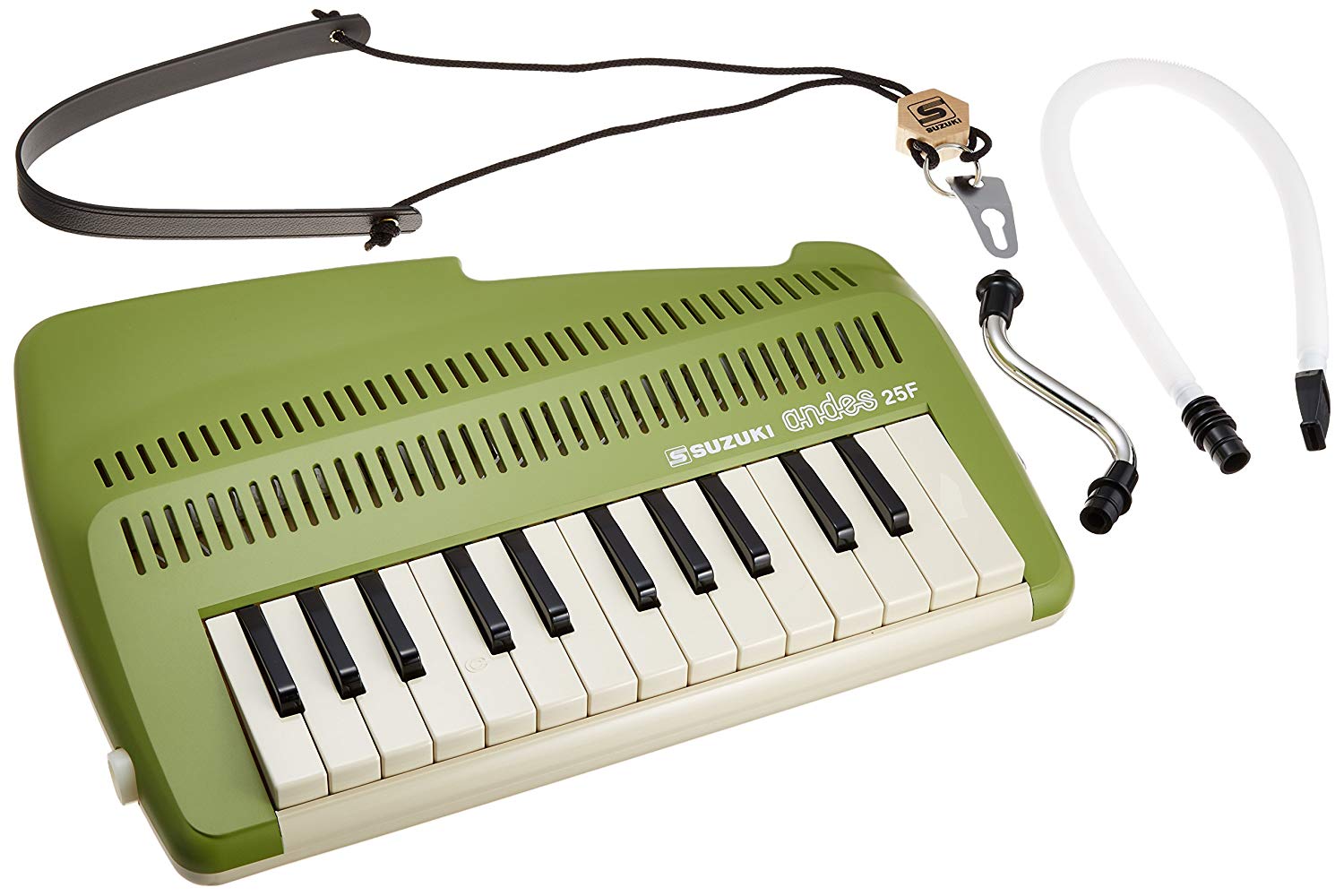
This isn’t technically a melodica.
But it looks like a melodica, and plays like a melodica, and has the coolest sound if you’re looking for something a little bit different.
It’s a really interesting instrument, one of a kind, and sounds a bit like the panpipes. It takes some practice to get a consistent pitch, but in the meantime, it sounds great for effects!
The Suzuki Andes A25F on Amazon
Concluding words
I hope this has been helpful!
The melodica is a truly versatile and fun instrument. Whatever model you play, make sure to make use of the free lessons, and do your daily practice!
Feel free to ask questions in the comments
Common melodica FAQs
Is melodica easy to play?
Yes, the melodica is probably the easiest musical instrument to learn to play. You only have to use one hand, and you blow harder to make louder sounds.
What’s the difference between a melodica and a Pianica?
There’s no real difference between a melodica and a Pianica. Pianica is Yamaha’s name for a melodica.
Is melodica a serious instrument?
Although the melodica is a fun portable instrument, which is easy to pick up, it can also be used as a serious instrument. Some wooden melodicas are used in classical music and jazz.

